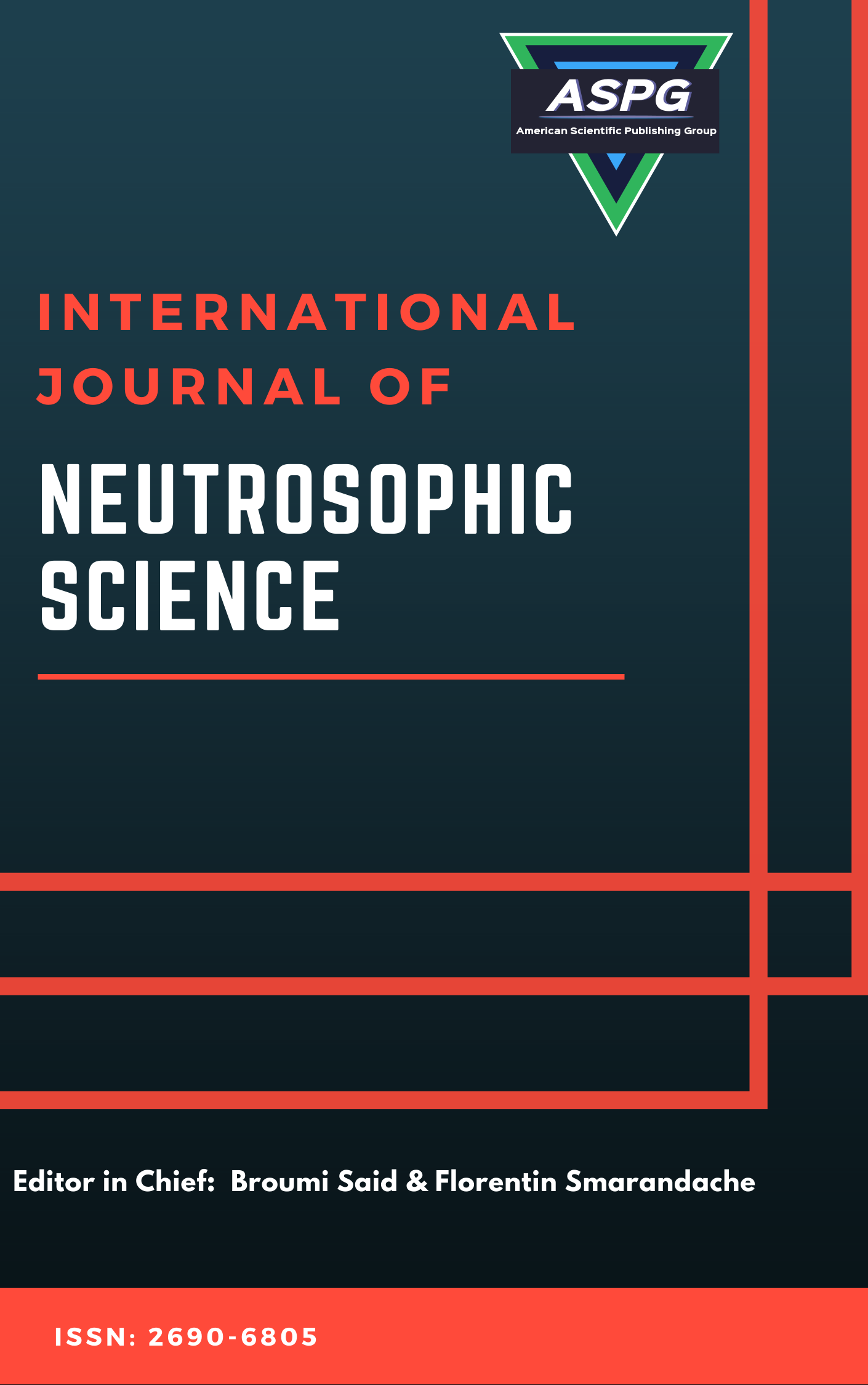

Volume 27 , Issue 1 , PP: 19-35, 2026 | Cite this article as | XML | Html | PDF | Full Length Article
Maha Alsaoudi 1 * , Gharib M. Gharib 2 , Abdallah Al-Husban 3 , Jeireis A. Abudayyeh 4
Doi: https://doi.org/10.54216/IJNS.270103
Integral equations, including Abel’s integral equation and linear Volterra integral equations of both the first and second kinds and neutrosophic Abel’s integral equation and linear Volterra integral equations of both the first and second kinds, regularly appear in advanced problems across biology, chemistry, physics, and engineering, often modeling systems with memory effects or time-dependent interactions. This study explores the GALM transform as a powerful and unified method for solving these equations. The exact solution of Abel’s integral equation and its neutrosophic version is derived, demonstrating the transform’s simplicity and efficiency through practical applications. Additionally, the GALM transform is employed to solve linear Volterra integral equations of the first and second kinds with their neutrosophic generalizations, with illustrative examples provided to validate its effectiveness. By addressing a wide range of problems, this research establishes the GALM transform as an accurate, reliable, and versatile tool, offering significant advantages over traditional methods in solving complex scientific and engineering equations.
Linear Volterra integral equations of the first and second kinds , Abel&rsquo , s integral equation , Neutrosophic Abel's equation , Neutrosophic integral equation , GALM transform , Convolution theorem , Inverse GALM transform
[1] R. Mishra, S. Aggarwal, L. Chaudhary, and A. Kumar, "Relationship between Sumudu and Some Efficient Integral Transforms," International Journal of Innovative Technology and Exploring Engineering, vol. 9, no. 3, 2020.
[2] U. Duran, "Modified Sumudu Transform and Its Properties," Sakarya University Journal of Science, vol. 25, no. 2, 2021.
[3] L. Zhang and M. Liu, "Integral Transforms and Their Applications in Engineering," Journal of Engineering Mathematics, vol. 128, no. 4, pp. 123-135, 2022.
[4] K. Patel and R. Shah, "Recent Developments in Integral Transforms for Differential Equations," Applied Mathematics and Computation, vol. 432, pp. 120-135, 2023.
[5] T. Nguyen and H. Tran, "A Comprehensive Study on Integral Transforms in Mathematical Modelling," Journal of Mathematical Modelling and Algorithms, vol. 22, no. 1, pp. 45-60, 2024.
[6] S. Falih Maktoof, E. Kuffi, and E. Sabah Abbas, "Emad-Sara Transform: A New Integral Transform," Journal of Interdisciplinary Mathematics, vol. 24, no. 4, 2021.
[7] S. A. Mahdi, E. A. Kuffi, and J. A. Jasim, "Solving Ordinary Differential Equations Using a New General Complex Integral Transform," Journal of Interdisciplinary Mathematics, 2022.
[8] D. P. Patil, P. D. Thakare, and P. R. Patil, "A Double General Integral Transform for the Solution of Parabolic Boundary Value Problems," International Advanced Research Journal in Science, Engineering and Technology, vol. 9, no. 6, 2022.
[9] E. A. Kuffi, N. K. Meftin, E. Sabah Abbas, and E. A. Mansour, "A Review on the Integral Transforms," Eurasian Journal of Physics, Chemistry and Mathematics, vol. 1, 2021.
[10] J. Jawdat, "Strong Coproximinality in the Bochner Spaces Lp(µ, X) and in Kothe Spaces," European Journal of Pure and Applied Mathematics, vol. 16, no. 3, 2023.